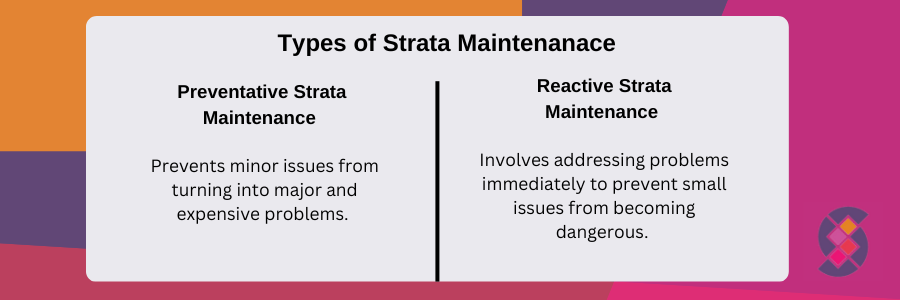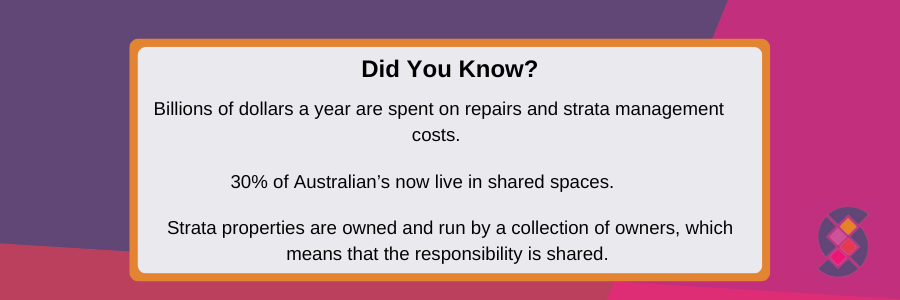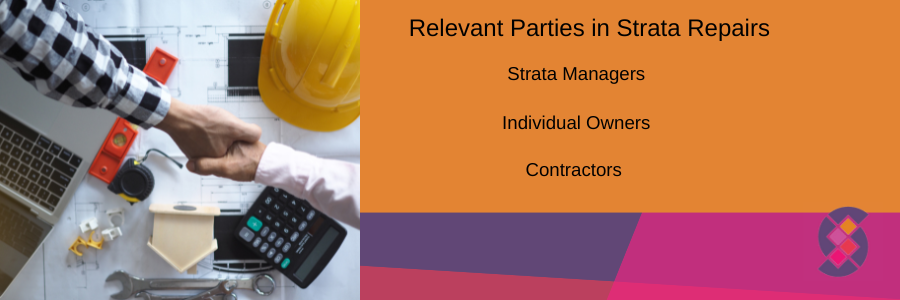Strata Repairs: Who is Responsible? | Strata Data
Living in strata-managed communities is a growing trend, with over 30% of Australians now choosing this lifestyle. Strata living brings about a sense of security and establishes a structured framework for property-related decision-making. If you choose to do so, however, you should be well-versed in your rights, duties, and the entities accountable for strata repairs.
When living in a strata community, it’s a given that issues will emerge, necessitating maintenance work. Whether it concerns strata plumbing, roof repairs, or electrical problems, understanding the responsible parties is essential to ensure the timely completion of all required repairs and maintenance.
Repairs in buildings under strata management in Australia amount to billions of dollars each year. Disagreements regarding these costs, and who is responsible for strata repairs, can lead to considerable delays and headaches for residents. By understanding who is responsible for fixing the issue, and who will be handling the costs, residents can avoid most of these problems.
Most of these problems can be avoided by residents who understand both the responsible party for resolving the issue and the financial aspects involved.
Let’s find out who exactly is responsible for strata repairs and what the responsibilities of the different parties involved are.
Who is Responsible for Strata Repairs?
Determining who is responsible for strata repairs is not always simple. Strata properties are owned and run by a collection of owners, which means that the responsibility is shared. This can lead to confusion and disagreements regarding the costs and the management of any repairs or maintenance that are needed.
The specifics of who is responsible for strata repairs is dependent on several factors. It depends primarily on the physical location, the type of subdivision, and what the regulations are within that particular strata or community scheme. The responsibility will generally either fall on the strata or community scheme (the body corporate), or the individual owners (residents) within that community.
Shared Spaces:
In shared spaces such as elevators, public gardens, and hallways, the responsibility will fall on the strata or community scheme (the body corporate). The body corporate manages the costs, and the implementation of any repairs in these common areas. However, residents contribute towards the costs, as part of their quarterly levies, or on occasion as part of a special levy.
Private Spaces:
On the contrary, individual owners are typically responsible for repairs within their own house, unit, or lot. It is the responsibility of the resident to maintain their own private property and to arrange any fittings of carpets and flooring, and other household fixtures such as curtains or cupboards. Your private property, fittings like carpets, flooring, curtains, and cupboards belong only to you, so their maintenance falls to you. In cases where the repair results from a common property issue, such as a roof leak, the strata corporation may assume the cost of the necessary repairs.
As you can see, it is not always a simple answer to the question ‘who is responsible for strata repairs?’. So, let’s take a deeper dive into strata maintenance, learn what it means for you as a resident, and outline why understanding your rights and obligations is so important.
Understanding Strata Maintenance
Proper strata maintenance is fundamental in providing residents with a secure, safe, and well-kept living environment. In straightforward terms, strata maintenance involves the care of facilities and shared spaces within a strata community, alongside the timely management of required repairs. In general, it covers the building exterior and shared outdoor spaces, as well as shared electrical work, plumbing, and other amenities.
Without the right level of maintenance, the functionality and longevity of the property will suffer. There are two types of strata maintenance, both of equal importance.
1. Preventative Strata Maintenance
Preventative strata maintenance is a crucial process that prevents small problems from becoming significant, costly issues. There is a lot that goes into proper preventative maintenance, and your strata management company can assist with this.
Preventative measures include general inspections, checking fire safety equipment, inspecting buildings for leaks, and carrying out any minor repairs when they happen so they do not become serious problems in the future. However, residents also need to ensure they implement their own preventative maintenance measures. It is vital that individual owners keep their own property clean, make all the necessary repairs, and raise any major concerns that they have to the strata management team.
2. Reactive Strata Maintenance
Reactive Strata Maintenance is equally important for residents. In addition to inspections and preventative maintenance, it is crucial that the entire strata community address problems that do arise, and deal with them immediately.
It is crucial for property owners and individual residents to prioritise and actively engage in reactive maintenance to ensure the well-being of everyone involved. By taking a proactive stance towards maintenance, we can promote the safety and comfort of residents while also avoiding expenses and ensuring the long-term sustainability of the property.
Maintaining a well-kept property benefits both owners and residents alike, which means that both parties have a role to fulfill in this regard. When maintenance is made a priority with a proactive approach, big, unexpected repair costs can be minimised. On top of that, this helps keep the property in good shape in the long run.

Relevant Parties and Responsibilities for Strata Repairs
When it comes to repairing properties there are separate roles for strata managers, individual owners, and contractors. As a resident, it’s important to understand how these responsibilities are divided and how they affect you. It’s not just about fixing things; it’s about ensuring everyone is in sync and that operations run smoothly.
Strata Managers
Strata managers make sure that any repairs are carried out in a timely manner. It is their responsibility to organise contractors on behalf of the body corporate to undertake the work. In some instances, strata managers may also be involved with communicating with individual owners (and any other relevant parties) to make sure everyone is informed and updated about repairs and ongoing work in common areas.
Individual Owners
As an individual owner in a strata community, your role is pretty straightforward. You’re in charge of looking after your own unit, making sure it’s well-maintained, and making any needed repairs as they appear. If there’s any repair work required in shared areas like elevators, gardens, or hallways, you should highlight them to the strata manager in order for them to take action on your behalf. Keeping in touch with the strata manager will help you to foster positive relationships and ensure that your living space is upkept well.
Contractors
While contractors are not necessarily part of the strata community, they are responsible for the actual implementation of the repairs, and for completing the work in the pre-agreed specifications and timeframe. It is also a contractor’s responsibility to ensure that their work does not impede, or damage any other areas of the property, and to comply with all safety regulations. Certain contractors must also be licenced, and all contractors will need to carry public liability insurance. Your strata manager can assist in ensuring contractors are appropriately licenced and insured.
Examples of Common Strata Repairs
To maintain the functionality of strata buildings, and to ensure the safety of residents, ongoing repair and maintenance work is crucial. However, who is responsible for looking after these repairs, depends on several factors. Often, it helps to explain by looking at some common examples of strata repairs. Below is a list of common, and necessary repairs that are completed in strata buildings across Australia every day:
- Plumbing issues
- Electrical problems
- Roof repairs
- Fixing damage to walls and flooring
- Repairing a leak in the roof
- Replacing an air conditioning unit
- Replacing or upgrading decking
- Repairs to balconies
Whether these repairs are needed in common spaces, or in an individual’s unit, is the primary factor to consider when determining who is responsible. For example, if an individual owner is dealing with plumbing issues in their own bathroom, it is their responsibility to arrange a repair. However, if the plumbing issue is happening across the entire property, or in common areas, it is up to the strata corporation to manage this repair and the associated costs.
How much money residents must contribute towards strata repairs (and other strata costs) varies across different strata properties, and across the units within that property. The costs/levies are typically assigned based on each owner’s entitlement, so we advise that you make yourself aware of your own personal situation. Usually, the owners with large units will be responsible for a greater share of the costs than the owners of smaller units.
Final Thoughts on Strata Repairs & Responsibilities
Knowing who’s responsible for what when it comes to strata repairs is crucial to avoid unwanted expenses or disputes. Not only does it ensure that you’re living in a safe and secure place that’s well-kept, but it also helps you avoid dreaded huge expenses down the line.
It’s all about finding that balance between staying proactive and reacting when needed. By doing this, you can catch and solve most issues before they snowball into major problems.
Stay well-informed about your rights, responsibilities, and obligations. Take care of the necessary repairs promptly when issues crop up in your own unit, and if the problem involves public property, like common areas, don’t hesitate to alert the strata management team right away. We advise you always speak to the strata managers before any work in your own unit, and to maintain a constant communication with them throughout the process.
If you are ever unsure about your responsibilities or entitlements, it can help to leverage the expertise of a professional to protect yourself and feel confident in your home. As Australia’s best strata service provider, our team at Strata Data are always here to help.





